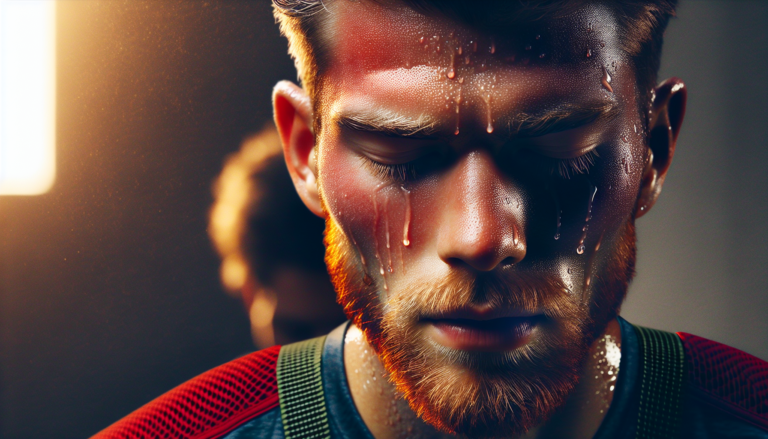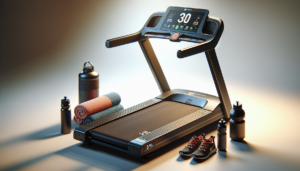Facial redness during exercise, also known as exercise-induced flushing, is a common occurrence that many people experience. While it can be uncomfortable and sometimes embarrassing, it’s a normal physiological response to physical activity. Understanding the reasons behind facial redness can help you manage and reduce its occurrence during your workouts.
Understanding Facial Redness During Exercise
When you exercise, your body undergoes a series of physiological changes to support the increased demand for oxygen and energy. One of these changes is the dilation of blood vessels, which allows more blood to flow to your muscles and skin. This increased blood flow is responsible for the redness that appears on your face during exercise.
The Physiology Behind Facial Redness
The dilation of blood vessels during exercise is a natural response that helps regulate your body temperature. As your muscles work harder, they generate heat, which needs to be dissipated to prevent overheating. By increasing blood flow to the skin, your body can release excess heat through sweating and radiation.
The increased blood flow also delivers oxygen and nutrients to your working muscles, supporting their function and aiding in recovery. However, this process can cause your face to appear flushed or red, especially if you have fair skin or are engaging in intense exercise.
Role of Blood Vessels and Histamine
The primary cause of facial redness during exercise is the dilation of blood vessels in your face. When you exercise, your heart rate increases, and your blood vessels expand to accommodate the increased blood flow. This expansion is more noticeable in the small blood vessels close to the surface of your skin, particularly in your face.
In addition to blood vessel dilation, exercise can also trigger the release of histamine, a compound that acts as a vasodilator. Histamine further expands your blood vessels, contributing to the redness and flushing effect.
Impact of Exercise Intensity and Type
The intensity and type of exercise you engage in can also influence the degree of facial redness you experience. High-intensity cardio exercises, such as running or cycling, are more likely to cause facial flushing due to the increased demand on your cardiovascular system.
Similarly, exercises performed in hot and humid environments, like hot yoga or outdoor workouts in the summer, can exacerbate facial redness. The heat and humidity make it more difficult for your body to cool itself, leading to increased blood flow to the skin.
Factors Influencing Exercise-Induced Redness
While facial redness during exercise is a common occurrence, several factors can influence the intensity and duration of the flush. Understanding these factors can help you better manage and reduce the redness you experience.
Environmental Conditions
The environment in which you exercise can significantly impact facial redness. Exercising in hot and humid conditions, whether outdoors or in a poorly ventilated gym, can increase your body temperature and lead to more pronounced flushing.
In extreme cases, exercising in high heat and humidity can lead to heat exhaustion, a condition characterized by excessive sweating, nausea, and dizziness. To minimize the risk of heat exhaustion and reduce facial redness, it’s essential to exercise in a cool, well-ventilated environment and stay hydrated.
Skin Type and Melanin Levels
Your skin type and the amount of melanin in your skin can also affect the visibility of facial redness during exercise. Melanin is the pigment that gives your skin its color and provides some protection against UV radiation.
Individuals with fair skin and lower levels of melanin may experience more noticeable facial redness compared to those with darker skin tones. This is because the increased blood flow is more visible through lighter skin.
Managing and Reducing Facial Redness
While facial redness during exercise is a normal and harmless response, there are several strategies you can employ to manage and reduce its occurrence.
Hydration and Cooling Strategies
Staying hydrated is crucial for regulating your body temperature and reducing facial redness during exercise. Drink plenty of water before, during, and after your workout to help your body cool itself effectively.
You can also try cooling strategies, such as:
- Exercising in air-conditioned or well-ventilated environments
- Using a fan to circulate air while you work out
- Applying a cool, damp towel to your face during breaks
- Splashing cool water on your face post-exercise
Post-Exercise Skin Care Tips
Taking care of your skin after exercise can help soothe facial redness and prevent irritation. Follow these tips for post-workout skin care:
- Gently cleanse your face with a mild, non-irritating cleanser to remove sweat and dirt
- Apply a cold compress or ice pack to your face for a few minutes to reduce redness and inflammation
- Use a lightweight, non-comedogenic moisturizer to hydrate and calm your skin
- Avoid using harsh scrubs or exfoliants, which can further irritate your skin
When to Seek Medical Advice
In most cases, facial redness during exercise is a harmless and temporary side effect. However, if you experience persistent redness, unusual skin irritation, or other concerning symptoms, it’s essential to consult a dermatologist or healthcare professional.
Persistent redness or skin irritation may indicate an underlying skin condition, such as rosacea or dermatitis, which may require medical treatment. A dermatologist can help diagnose any underlying issues and recommend appropriate treatments or management strategies.
| Symptom | Action |
|---|---|
| Persistent redness lasting more than an hour post-exercise | Consult a dermatologist |
| Unusual skin irritation or rash | Consult a dermatologist |
| Facial redness accompanied by dizziness, nausea, or fainting | Seek immediate medical attention |
In conclusion, facial redness during exercise is a common and normal physiological response to increased blood flow and body temperature. By understanding the factors that influence facial redness and employing cooling and skin care strategies, you can manage and reduce the occurrence of exercise-induced flushing. Remember, the benefits of regular exercise far outweigh the temporary discomfort of facial redness. If you have concerns about persistent or unusual symptoms, consult a healthcare professional for personalized advice and treatment options.






